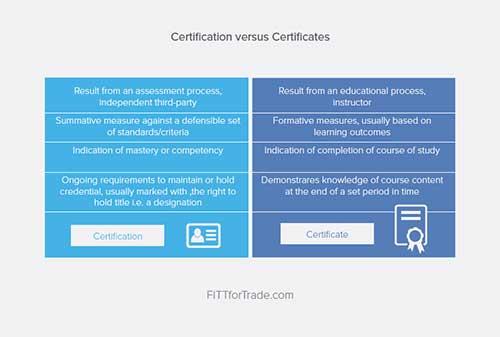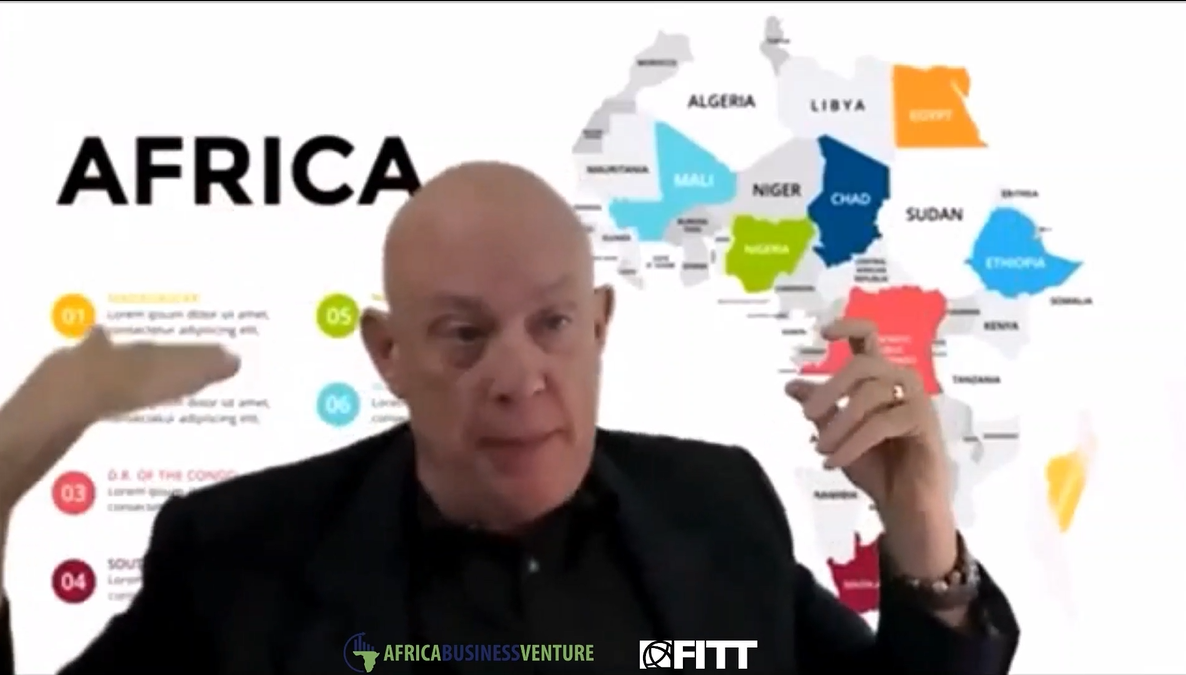
FITT’s mandate since 1992 has been to build competence to succeed in global markets. To do this, we offer a number of products and services to the international business community, including our FITTskills export/import training courses, and the Certified International Trade Professional (CITP®|FIBP®) designation.
There is a plethora of great training available for international business practitioners. However, there are very few targeted professional designations in this field of practice. Credentials come in many forms and, like the myriad of training programs available for international trade practitioners, there are also an abundance of international trade credentials to choose from. One is not necessarily better than the other, they are just different.
Earning credentials through proven knowledge
FITT’s approach to providing international trade credentials is assessment-based, meaning that whether you receive a FITT Certificate or Diploma, you have undertaken an assessment. With respect to the professional designation, the CITP®|FIBP®, candidates must have also been assessed based on the detailed CITP®|FIBP® Competency Profile.
FITT assessments are optional; the implication of not taking an assessment for the training program is that you do not receive the credential. Whether completing an assessment or not, you will have received training that embodies the standards that industry has defined.
Professional credentials are offered by non-academic bodies such as FITT, and at least in North America, are of greatest interest to individuals who have completed post-secondary education. In North America, these credentials are generally referred to as professional “designations” or “certifications”, inferring that the certifying body has a mandate specific to the profession in question.
In the field of voluntary professional credentials such as FITT’s CITP®|FIBP® designation, to be deemed a “certified professional”, a rigorous assessment is required. Furthermore, the assessment must be based on industry defined competency standards, using a rigorous research model that is industry-driven.
At the same time, FITT believes that individuals should have access to our body of knowledge, whether or not they choose to undertake the assessments to pursue the credentials. To clarify, anyone can access FITT’s training and resources without committing to undertaking an assessment.
Certification versus Certificate:
 While the terms “certification” and “certificates” are similar, and often used interchangeably, in the world of credentials there are distinct differences.
While the terms “certification” and “certificates” are similar, and often used interchangeably, in the world of credentials there are distinct differences.
Certification involves an objective and independent assessment of an individual’s knowledge and skills. Basically, this means that there is some form of testing required to achieve the certification. Certificates, on the other hand, will acknowledge completion of a course or program, such as the FITT Certificate and Diploma, conferred upon individuals who complete the FITTskills training program.
Additionally, certificates do not require any further obligations by the candidate and the credential is held for a lifetime. In contrast, certifications have ongoing professional development requirements in order to maintain the credential. There are, of course, many organizations that offer “certificates”, such as an “export certificate”, with no requirement for an assessment. These are in effect “certificates of participation”, rather than attesting that an individual has the skills or knowledge implied.
Certification: The International Standards Organization (ISO) defines certification as “the provision by an independent body of written assurance that the product, service or system in question meets specific requirements.” Being “certified” provides independent verification and proof that an individual meets a certain level of expertise in a field of practice.
Certification Program: A certification program is generally defined as an industry-recognized credential granted to a candidate by a certifying body upon successful demonstration of occupational competence.
- A Certification Program confirms that the candidate has the knowledge and skills to perform within the said occupation;
- The certification body will have a method of assessing individual competence irrespective of where the candidate received their knowledge;
- The certification program is based on set competency standards; and, encourages continued competence.
One of the key characteristics of a Certification Program is that an assessment or examination is conducted.
Certifying Body Characteristics: A certifying body is the organization that grants a certification. If a certification program, such as the CITP®|FIBP® certification/designation, is to survive and have ongoing credibility, the certifying body (e.g. FITT) needs to have competency standards, assessment and measurement tools, quality assurance and governance processes, communication/marketing capabilities, and resources.
We at FITT consider international trade a professional practice, which is evidenced by the fact that we were the first organization in the world to offer a professional designation in this specialized field of practice.
At one time there were only three formally recognized “professions”, namely, doctors, lawyers, and clerics. Today, there are hundreds of both voluntary and compulsory professions. Professional status in a field of practice typically evolves over time.
Holding a certificate, diploma, or a professional designation can add a boost to your professional profile and help you land that dream job in your field. The key to deciding which level of credential will benefit you most is to assess the competencies required by recruiters for your desired position, and match the right credentials to demonstrate that expertise.







disqus comments